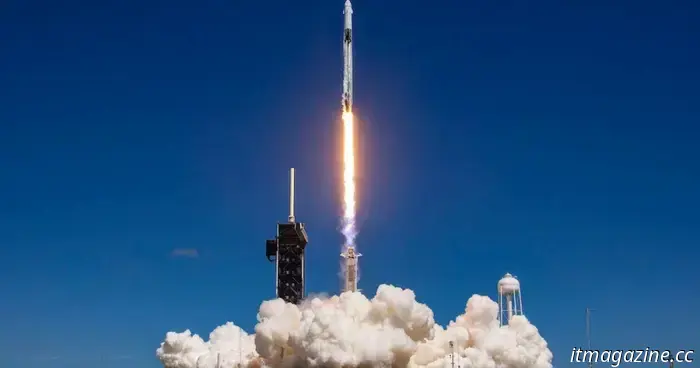
Pony.ai of China experiences a spike in shares following its agreement with Uber, as the reality of fully autonomous vehicles approaches.
On May 6, 2025, Pony.ai announced a strategic alliance to integrate its robotaxis into the Uber platform. Credit: Pony.ai.
Shares of Pony.ai, a Guangzhou-based developer of robotaxis in China, surged by 48% on Tuesday following the announcement of its partnership with Uber to provide autonomous vehicle rides. This collaboration marks the latest in Uber's efforts to mainstream robotic taxi services.
Why this is significant: The notable increase in shares, alongside Uber's third partnership with a Chinese firm in just one week, suggests a notable shift in perception towards autonomous vehicle companies. This comes after a period of declining investor confidence concerning the timelines and costs associated with self-driving technology. Liu Guanghao, a partner at Shanghai venture capital firm Befor Capital, mentioned that large-scale deployment of highly autonomous vehicles is feasible within the next five to ten years, with a global penetration rate expected to surpass 10% in the next decade.
Liu believes that ride-hailing giants like Uber and Didi will be among the biggest beneficiaries of this economy of scale as fully autonomous technology inches closer to reality, fueled by advancements in end-to-end artificial intelligence and machine learning.
Details: Initially, Pony.ai’s autonomous ride-hailing vehicles will include a human driver and will be offered through the Uber app in a Middle Eastern country later this year, with plans to expand to other markets. The companies did not disclose further specifics. Pony.ai has also partnered with Toyota, China’s GAC, and BAIC for its robotaxi production, aiming to grow its autonomous fleet from nearly 300 vehicles to 1,000 by year-end. Its seventh-generation robotaxis are reported to be 20% to 30% cheaper than those from U.S. rival Waymo, according to TechNode.
An analyst noted at this year's Shanghai Auto Show that Pony.ai’s autonomous driving technology remains a leader in the market, particularly when handling tasks like making U-turns or changing lanes on highways. Rival companies like Baidu and Didi are also developing robotaxis, along with WeRide and Momenta.
Context: This announcement comes just three days after Uber revealed its collaboration with Momenta, another Toyota-backed Chinese startup, to deploy robotaxis for passenger transport in Europe by 2026. Furthermore, on Monday, Uber announced an extension of its partnership with WeRide, planning to introduce its robotaxi service in an additional 15 cities across the Middle East and Europe in the next five years, building on their existing operations in Abu Dhabi.
Pony.ai’s valuation has fallen from over $8 billion prior to its IPO in 2022 to $5.1 billion at the close on Tuesday, mirroring a trend seen with peers like WeRide during this time. The company achieved a valuation of $5.25 billion in its long-anticipated U.S. IPO in November.
READ MORE: Shanghai Auto Show: Automakers navigate shifting smart driving market dynamics
Jill Shen is a technology reporter based in Shanghai, covering Chinese mobility, autonomous vehicles, and electric cars. Connect with her via email: [email protected] or Twitter: @jill_shen_sh.

Other articles
 In Stephen King's The Long Walk, participants face the choice of either walking or facing death.
One hundred men participate in a walking competition, but ultimately only one will survive in The Long Walk, a dystopian thriller inspired by a Stephen King novel.
In Stephen King's The Long Walk, participants face the choice of either walking or facing death.
One hundred men participate in a walking competition, but ultimately only one will survive in The Long Walk, a dystopian thriller inspired by a Stephen King novel.
 How to finish all Acts in the Marvel Rivals Hellfire Gala Moments event and obtain free rewards.
Marvel Rivals has introduced a new Hellfire Gala Moments event that includes missions for you to finish in return for free rewards.
How to finish all Acts in the Marvel Rivals Hellfire Gala Moments event and obtain free rewards.
Marvel Rivals has introduced a new Hellfire Gala Moments event that includes missions for you to finish in return for free rewards.
 This week, Amazon's top streaming device is available for $95.
The Amazon Fire TV Cube ranks among the fastest and most sophisticated streaming devices available, and this week it is on sale at Amazon and Best Buy for $95!
This week, Amazon's top streaming device is available for $95.
The Amazon Fire TV Cube ranks among the fastest and most sophisticated streaming devices available, and this week it is on sale at Amazon and Best Buy for $95!
 3 fantastic Max crime dramas to check out in May 2025
These crime dramas highlight just how extensive Max's collection of excellent content truly is.
3 fantastic Max crime dramas to check out in May 2025
These crime dramas highlight just how extensive Max's collection of excellent content truly is.
 NASA+ launches on Prime Video — at no cost.
Space enthusiasts have something to look forward to as NASA has introduced a FAST (Free Ad-Supported Television) channel on Prime Video for its NASA+ coverage.
NASA+ launches on Prime Video — at no cost.
Space enthusiasts have something to look forward to as NASA has introduced a FAST (Free Ad-Supported Television) channel on Prime Video for its NASA+ coverage.
 Hubble captures images of two spiral galaxies: one flawless and one unusual.
Two new images from the Hubble Space Telescope illustrate the diversity of spiral galaxies.
Hubble captures images of two spiral galaxies: one flawless and one unusual.
Two new images from the Hubble Space Telescope illustrate the diversity of spiral galaxies.
Pony.ai of China experiences a spike in shares following its agreement with Uber, as the reality of fully autonomous vehicles approaches.
This surge, along with Uber's third partnership with a Chinese firm in a week, reflects a notable enhancement in sentiment regarding autonomous vehicle companies.
